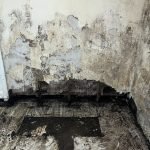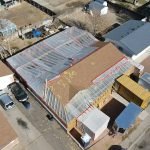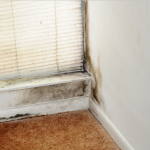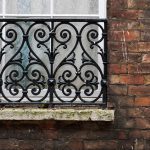
How to Prevent Mold and Wood Rot After Water Damage
Once your home has had water damage, you have roughly 72 hours (or less) to get everything cleaned up and prevent the growth of mold. After that, extremely damaging wood rot and mold can start to set into your floors and even your walls.
A small problem that is easily fixed by properly drying your home as soon as possible can turn into a huge one that will cost you thousands of dollars. Not to mention other concerns like the fact that mold can cause health issues including fever and difficulty breathing. Those with existing respiratory issues like asthma or COPD are especially susceptible to these issues and should not be anywhere near mold.
Part of the problem here is that the process of drying out the water damage isn’t always straightforward. Areas that look dry often aren’t. Most moisture is hidden in the walls and flooring, so it’s critical to identify and dry all the affected areas to prevent rot and the growth of mold!
This client out of Lakeland, Florida had hidden water damage in their walls that ultimately caused a serious wood rot issues!
What is Wood Rot?
Wood rot is the result of mold and mildew on any wooden surface. Because wood is biodegradable, mold will eat away at the wood itself.
Mold grows when a wooden surface or the air around it has a high moisture content for any length of time. If mold is allowed to grow, it will ultimately destroy the wood and can ultimately cause severe structural damage to your home.
Rotten wood absolutely must be replaced; it makes your home dangerous to live in. Often you’ll need serious mold remediation and treatment after discovering rotted wood in your home.
Where Does Wood Rot Typically Happen?
The most common place for this type of damage to hide is in exterior walls and attics. Water can penetrate small cracks in concrete, stucco and paneling and seep into the interior walls causing wood rot and mold damage.
Water makes it’s way into your attic due to high winds forcing it in through Soffit lining and unseen holes in your roof. Another common culprit of water in your attic and interior walls are your gutters. Clogged or broken gutters can cause water to end up in your attic. It can also get into in your basement or crawl space through the foundation.
Preventing Wood Rot
While you can’t prevent everything, wood rot is a very late symptom of larger water damage issues. Usually, you can avoid getting to that point by preventing most serious water damage before it happens.
Check Your Home Regularly
Checking your home annually for places where water could get into the walls or other areas is a great way to help prevent quite a bit of serious damage. Cracks in caulking, sagging or leaking downspouts, and clogged crawl spaces are common places where water damage can creep into your home without you realizing it.
Use Pre Treated or Painted Wood
When you’re building anything in or around your home, use wood that’s been treated to prevent decay and water damage, or completely painted or stained and sealed.
Immediately Repairing Water Damage
If you have a major (or even minor) water damage issue, you should get it dealt with as soon as possible. The longer you wait, the more likely it will be that rot and mold will set in.
Can You Dry the Water Damage Yourself?
While you might think that you can dry out your water damaged areas yourself, we’ve found that most homeowners are unable to fully dry out the water damaged areas. Most people don’t have the proper tools to detect hidden pockets moisture within walls and floors.
It’s always best to hire a professional to dry out your water damaged areas, especially if you have a lot of standing water in your home.
Professional water damage restoration teams will use specialized tools to manipulate temperature and relative humidity to remove the excess moisture in your home.
Our sister company’s water damage restoration teams use industrial air movers and dehumidifiers to remove water retained by building materials and other hard-to-access moisture. They carefully monitor the progress using moisture meters until your home is bone dry and the risk of wood rot and mold growth is eliminated.
Get Help With Wood Rot and Mold Today
Our Jenkins Environmental Services Team would be happy to help you with mold and rot issues in your home, just give us a call at 888.777.9742 today!





